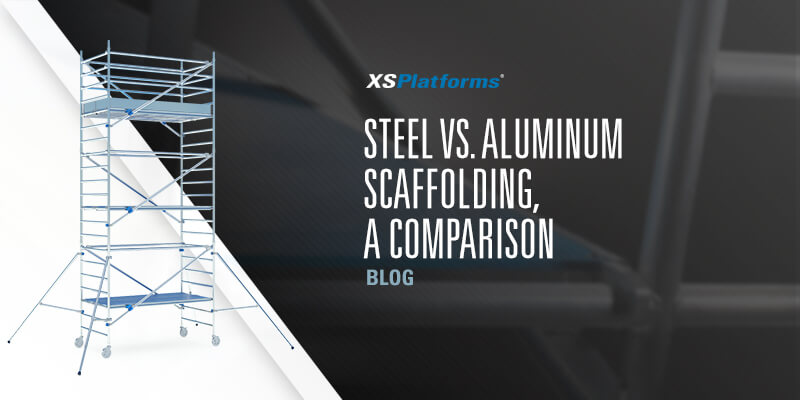
Whether it is in construction, transportation, the advertising industry or any other industry, scaffolding is often used to provide access to a facade or workplace at height. Scaffolds are often mainly made out of aluminum or steel, which both have their own advantages. What solution is best for your company depends on the projects you have.
In this blog we’d like to examine the advantages of both materials, so you can make an informed decision when buying (or renting) scaffolding.
Weight and assembly
Out of both materials aluminum is the most lightweight. This means aluminum scaffolding materials are easier to move to and on a location. The lesser weight compared to steel scaffolding parts means more parts can be moved together in, for example, a truck. After all the maximum load of the truck will be reached much sooner with steel components. An additional advantage is that less fuel will be used for transporting aluminum scaffold parts.
Another benefit of the lightweight aluminum scaffolding is the time saved on system setup. Heavier materials take more people to erect a scaffold. Not to mention lifting the heavy materials could cause injuries. This could increase costs because extra personnel has to be brought to replace the people who got hurt. Aluminum scaffolding parts are easier to move around and lift. Making the setup of a scaffold less labor intensive, and thus also resulting in less costs. This makes aluminum scaffolds more suitable for short duration projects.
The XSPlatforms SafeScaffold and SafeTower take the cake when it comes to fast assembly. Not only are these scaffolds mostly build up from aluminum alloy components, setup also does not require any special tools. The limited number of components easily slide into place.

Weather influences and maintenance
A steel scaffold offers a solid standing and can easily withstand heavy winds and rain. Even in more extreme cases, such as an earthquake the steel scaffold stands tall. Aluminum scaffolding on the other hand is more influenced by harsh weather. Do note that both scaffolding systems will need to be secured when reaching above a certain level. Check local legislation to see what rules apply to your worksite.
The weather can have a negative effect on steel scaffolding, however, as steel can rust; even stainless steel components can get effected by corrosion. Not using the correct bolts or locking devices could speed up this process. Aluminum scaffolding cannot rust, what can happen is a form of corrosion where aluminum oxide is formed. This is causes a discoloration, but the oxidization formed is very hard and will prevent further deterioration.
Strength
Aluminum and steel scaffolds are both able to carry heavy loads. However, steel scaffolds are often more suitable for long term projects where large, heavy materials have to be used. How much load a scaffold can take depends on the setup of the system, which is something a manufacturer should be able to tell you. The maximum capacity of a system is something you should consider before a project.
There are environments where a scaffold will need to be setup where a weight restriction exists. In such cases a steel scaffold will most likely not be practical.
Costs
Steel scaffolding is moderate in costs and can last a lifetime.
While at first it may seem that aluminum scaffolds are more costly, the durability of the materials and the earlier mentioned lightweight advantages can make this type of scaffold more favorable in the long run.
